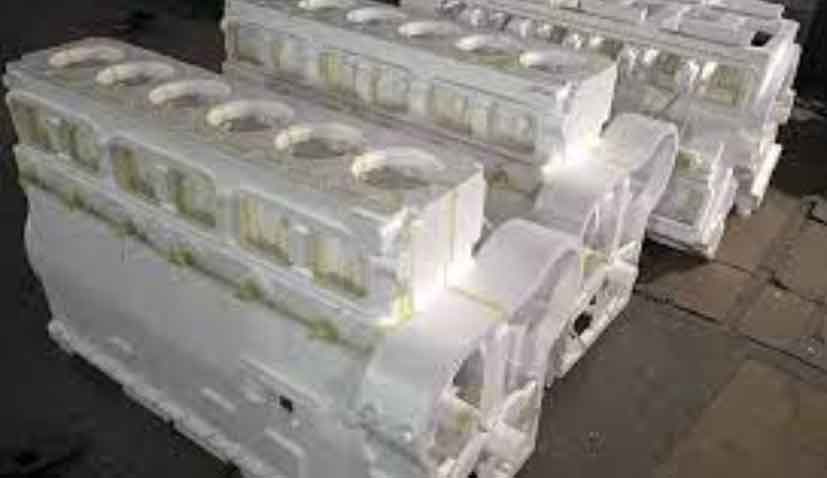This paper investigates solutions for surface wrinkling and shrinkage defects in ductile iron (QT450-10) gearbox housings produced through lost foam casting. By redesigning the gating system and implementing innovative heat dissipation techniques, the study achieves significant improvements in casting quality while maintaining process efficiency.

1. Process Challenges in Lost Foam Casting
The gearbox housing (112 kg weight) features varying wall thicknesses (14-54 mm) and concentrated thermal nodes, making it prone to defects in lost foam casting processes. Initial trials revealed:
| Defect Type | Location | Occurrence Rate |
|---|---|---|
| Surface Wrinkling | Upper surfaces | 32% |
| Shrinkage Porosity | Thermal nodes | 28% |
2. Chemical Composition and Process Parameters
The base material composition for QT450-10 in lost foam casting:
| Element | C | Si | Mn | P | S | Mg | RE |
|---|---|---|---|---|---|---|---|
| Content (%) | 3.5-4.0 | 2.0-3.0 | ≤0.45 | ≤0.05 | ≤0.025 | 0.02-0.06 | 0.015-0.04 |
Key process parameters for lost foam casting:
$$ t = S\sqrt{\frac{G}{L}} $$
Where:
\( t \) = Pouring time (s)
\( S \) = System coefficient (1.8-2.2 for ductile iron)
\( G \) = Casting weight (kg)
\( L \) = Runner length (cm)
3. Wrinkling Defect Analysis and Solutions
The original top-gating system caused turbulent flow patterns, leading to incomplete foam decomposition and carbon deposition. The redesigned bottom-gating system features:
- Central sprue with 480mm height
- 4 ingates (70×40 mm each)
- Total ingate area: 112-128 cm²
The modified pressure head calculation:
$$ H_P = H_0 – \frac{C}{2} $$
Where:
\( H_P \) = Effective pressure head (34 cm)
\( H_0 \) = Total height (40 cm)
\( C \) = Casting height (12 cm)
4. Shrinkage Porosity Elimination Strategy
The thermal management system employs foam heat sinks to enhance solidification control:
| Parameter | Original | Optimized |
|---|---|---|
| Heat Sink Quantity | 0 | 12 |
| Cooling Rate (℃/s) | 1.2 | 3.8 |
| Modulus Ratio | 1.0 | 0.67 |
The heat sink effectiveness equation:
$$ Q = kA\frac{\Delta T}{d} $$
Where:
\( Q \) = Heat transfer rate
\( k \) = Sand permeability
\( A \) = Heat sink surface area
\( \Delta T \) = Temperature gradient
\( d \) = Heat transfer distance
5. Process Verification and Results
Implementation in 2,000 castings showed:
- Wrinkling defect rate: 0% → 100% elimination
- Shrinkage porosity: 0.2% (from 28%)
- Yield improvement: 82% → 91%
The success of this lost foam casting optimization demonstrates that proper gating design combined with active thermal management can effectively resolve complex defects in thick-section ductile iron castings. The developed heat sink technology provides a novel solution for controlling solidification in lost foam casting processes without compromising process efficiency.
